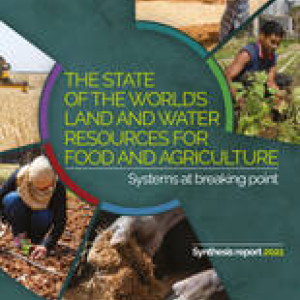
This synthesis report from the United Nations Food and Agricultural Organization looks at the land, soil and water resources used by the world’s food systems. It uses the “driver–pressure–state–impact–response” framework to analyse the links between agricultural production, society and the environment.
Regarding drivers, the report notes that increased production of food, feed and biofuels is required. The number of undernourished people has increased between 2014 and 2020 (from 604 million to 768 million). Prime agricultural land is being lost to urbanisation, and there are limited opportunities to expand the area of cultivated land.
On pressures, the report focuses on impacts from agriculture itself, including chemical inputs, mechanisation, monocropping and intensive grazing.
The impacts from these pressures are felt mainly in rural communities, as well as in some poor urban communities with limited access to food. Degradation of land, soil and water has negative effects on agricultural productivity as well as on wider ecosystems services.
The report sets out a number of institutional and technical responses, stressing sustainable, integrated management of land, soil and water resources as well as forms of governance that include people who are well-placed to contribute to changes but who might be excluded from decision-making processes, such as poorer and socially disadvantaged groups living in rural areas.
Read the synthesis report, The state of the world’s land and water resources for food and agriculture: Systems at breaking point (SOLAW 2021), here or here. The full report will be published in early 2022. See also the TABLE explainer Impacts of climatic and environmental change on food systems.







Post a new comment »